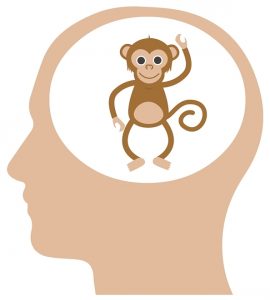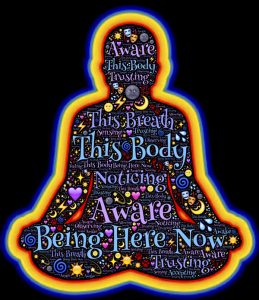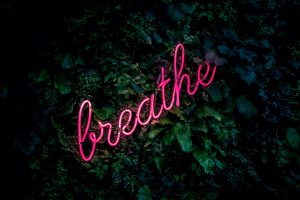
“Feelings come and go like clouds in a windy sky.
Conscious breathing is my anchor.”
Thich Nhat Hanh: Stepping into Freedom
Last time I promised I would share the breathing technique that helps me stay in the moment. It is not a secret – anyone can learn how to do this and feel the benefits! It is simple to learn and can be practised anytime, anywhere.
To begin it is helpful to find a quiet space (once you know the technique this is not necessary) free from distractions. You can sit comfortably upright, or lie on your back as you prefer – as long as you are not hunched over, constricting the chest and abdomen. Breath through the nose for this technique; if you are very bunged up purse the lips to control the breath, rather than breathing with an open mouth. The eyes can be closed or open, although it is easier to focus the awareness on the breath with them closed.
Place one or both hands gently onto the abdomen, below the ribs and just feel into the natural breath. You may already notice the movement of the abdomen – expanding with the inhalation, contracting with the exhalation. (If you don’t feel any movement don’t worry – you are going to work on this movement as part of the breathing technique!)
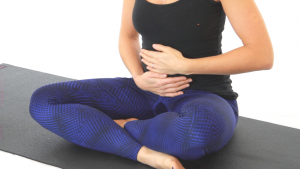
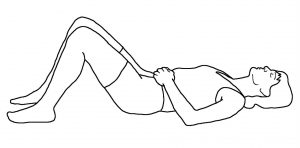
Consciously direct the breath into the abdominal region. The belly will push against the hands on inhalation, as the lungs fill and expand and draw away from the hands on exhalation, as the lungs empty and contract. Take a few breaths like this until you feel the movement and your breathing rhythm becomes even and relaxed.
It can help if you imagine you are filling and emptying a balloon in your abdomen. (Of course you are not actually breathing into your abdomen, because that is impossible! You are breathing into your lungs, but allowing the abdomen to move outwards as the diaphragm moves downwards.)
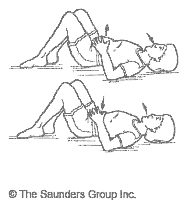
Once you have found your rhythm, begin to slow and deepen the breath; filling and emptying the lungs completely with each breath. Aim for each exhalation to be slightly longer than the inhalation, by slowing and controlling the rate of breathing. If it helps you can count the length of each inhale and exhale; for example if your inhale is a count of four, your exhale should be a count of five or six.
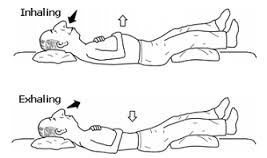
Take ten breaths using this technique, keeping the awareness with the breath. Follow the breath in through the nostrils, through the throat, into the lungs and out from the lungs, through the throat and through the nostrils. If you lose count, begin again from one – this will help you control your awareness and keep it from becoming lost in thoughts. If you become frustrated stop, take a few natural breaths and then try again. It will get easier with practise.

When you have mastered this breathing technique you will be able to practise whenever you feel the need to come back to the moment. This breathing technique is also great for calming an anxious mind, because it brings the body out of fight-or-flight mode and into rest-and-digest mode. By training yourself to focus on the breath you are also learning to calm and control your monkey mind. I find I am now able to use this technique even if I am out and about, as I no longer need to keep a hand on my abdomen to feel it moving.
Let me know how you get on or ask me any questions in the comments!
Until next time, Namaste.

